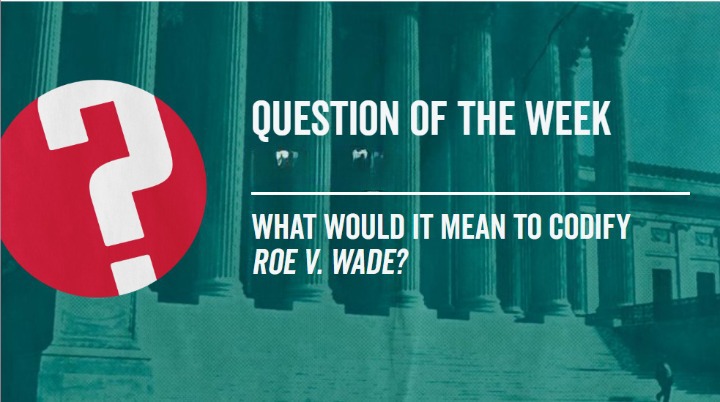
The U.S. Supreme Court took a step backward for American constitutional democracy and a step forward for American autocracy with its abortion decision last Friday. Codifying abortion into federal law by the U.S. House and Senate will restore a woman’s right to an abortion, but it will not stop the Supreme Court from stripping away other democratic rights. To protect all other democratic rights the House and Senate must produce legislation that goes much further than simply codifying abortion!!!
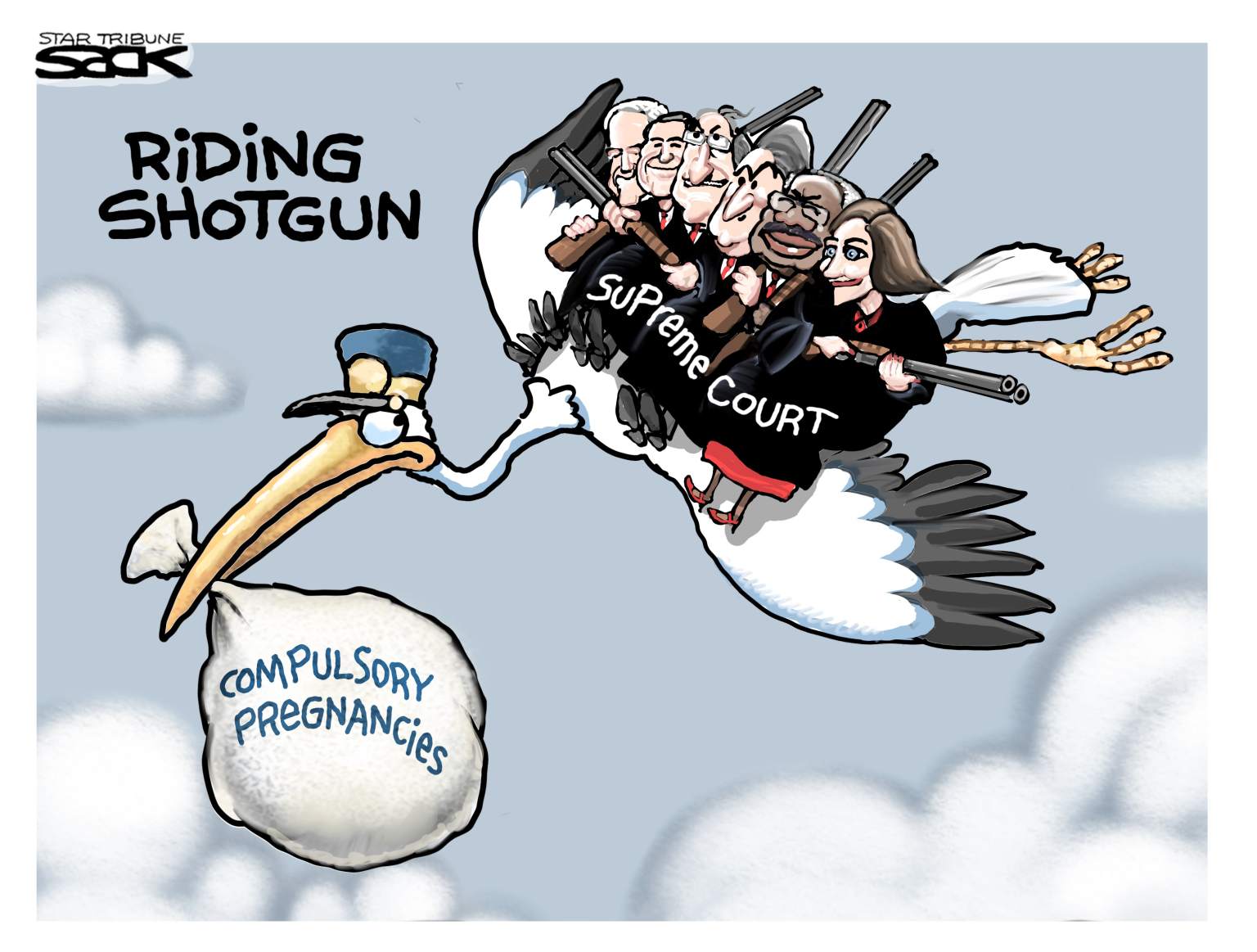
The U.S. House and Senate codifying abortion is a requirement for maintaining American democracy for 2 important reasons. The 1st reason is the most obvious, it restores the fundamental right of women to control what happens to their bodies and lives. The 2nd reason is to restore stability to American democracy without creating new instability.
By codifying abortion into law thru House and Senate legislation, the right of women to control their bodies can be restored without the Supreme Court having to immediately overturn last Friday’s overturn of Roe v Wade, thus avoiding the appearance of liberal justices overturning conservative justices based on politics and not the rule of law, and preserving the appearance of stability for decisions emanating from the Supreme Court. In other words, back-and-forth decisions that would overturn each other emanating from the Supreme Court, are harmful to the integrity and creditability of the Supreme Court.
In writing the majority opinion to overturn Roe v Wade, Justice Samuel Alito reasoned that women had no right to an abortion because abortion is not mentioned in the American Constitution. In 2010 Justice Alito ruled in Citizens United v. Federal Election Commission that corporations were entitled to First Amendment free speech rights even though corporations are not mentioned in the American Constitution and did not even exist as recognized entities in America at the time the Constitution was written.

As part of the majority opinion Justice Clarence Thomas chimed in to say that since the Supreme Court was overturning Roe v Wade, there are other cases he said “were demonstrably erroneous decisions”, the cases Thomas specifically mentioned: Griswold vs. Connecticut, the 1965 ruling in which the Supreme Court said married couples have the right to obtain contraceptives; Lawrence v. Texas, which in 2003 established the right to engage in private sexual acts; and the 2015 ruling in Obergefell v. Hodges, which said there is a right to same-sex marriage.
I assume the only reason Justice Thomas didn’t cite Loving v. Virginia, the 1967 Supreme Court ruling that legalized marriage between American Whites and American Blacks, as one of those “demonstrably erroneous decisions” is because he is part of a bi-racial marriage.
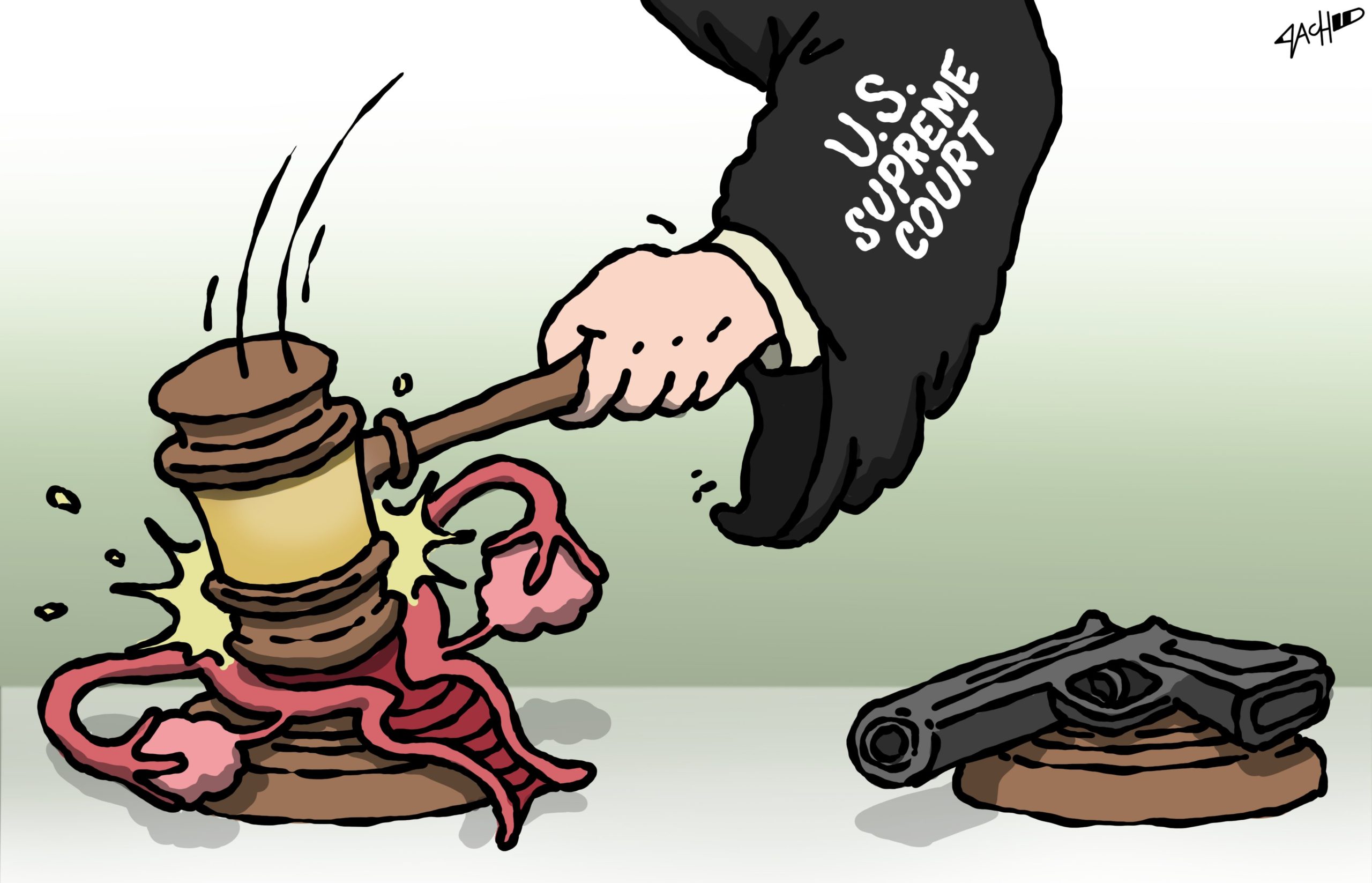
On Thursday the Supreme Court said the government COULD NOT TELL a man or a woman that they could not carry a gun on their body. But the next day on Friday the Supreme Court said that the government COULD TELL a woman that she had to carry a child in her body
Both Justice Brett Kavanaugh and Justice Neil Gorsuch lied and mislead Senators into thinking, during their confirmation hearings, that Roe v Wade was a precedent that they would vote to reaffirm. Chief Justice John Roberts wrote the majority decision in Shelby County v. Holder, a decision that gutted The Voting Rights Act and activated legal vote suppression and discrimination based on race or political affiliation across America. And on last Friday the Supreme Court said that the government had the authority to tell a woman that she had to carry a child in her body, but the day before on Thursday, the same Supreme Court said the government did not have the authority to tell a man or a woman that they could not carry a gun on their body.
It’s clear the Supreme Court is not deciding cases based on the rule of American constitutional law, the Supreme Court is deciding cases based on the rule of ideology. Codifying abortion alone will do nothing to protect other democratic rights and ultimately codifying abortion alone won’t even protect the right to an abortion. Since the Supreme Court is now deciding cases based on the rule of ideology or the rule of the conservative political objective of the moment, they could easily decide or easily make up a reason that a new federal law codifying abortion is unconstitutional. That’s why the same legislation for codifying abortion must also include language to apply a small d democratic fix to America’s autocratic Supreme Court.
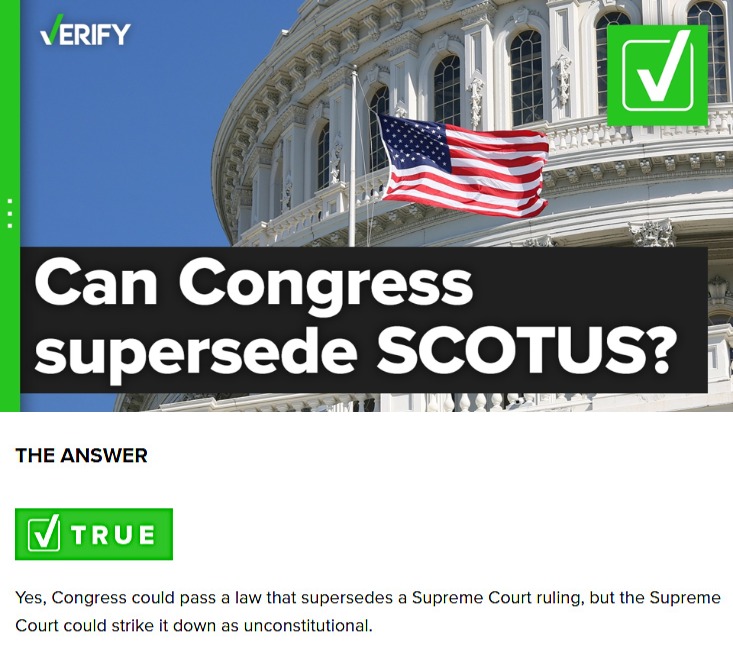
This is why the 10-year reappointment with its ability to immediately remove up to 3 sitting Supreme Court Justices must be passed into law at the same time abortion is codified into law
As long as America’s Supreme Court continues to decide cases based on the rule of ideology, there will be future instances of the Supreme Court reviewing what Justice Thomas described as, “demonstrably erroneous decisions”, and the overturning of legal precedent facilitating the retraction of established democracy rights. To ensure that democracy, as we know it today, survives and thrives, and autocracy as we know it today dies, there must be both an immediate and long-term rescue of the Supreme Court. The 2 most popular legislative rescue reforms adding justices to the court and term limits for justices, are either ineffective for the short term or can potentially contaminate the Supreme Court with a different type of corruption.
Adding justices to the Supreme Court should only be done to improve the process of HOW court decisions are reached, or to increase how many cases the Supreme Court can hear each year, but never to change what the court decisions will be. And term limits for justices address the long term but not the immediate short-term problem with the Supreme Court. A hybrid of the term limit is the best way to address both the long-term and short-term problems plaguing the court. Any proposed House and Senate legislation for codifying abortion should also establish a new 10th year of service reappointment for Supreme Court justices.
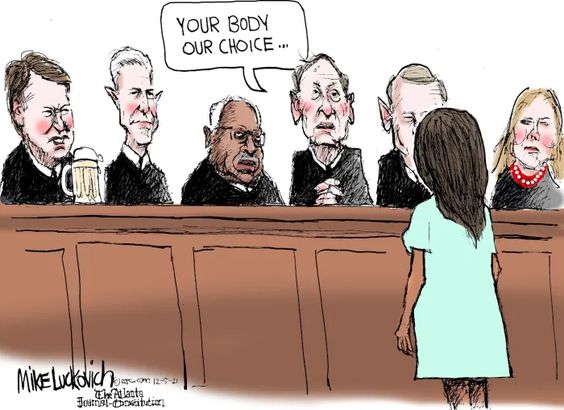
The new law would require the President to decide, without a consent vote of the Senate, whether to reappoint or not reappoint each Supreme Court Justice at every 10th-year interval of their service on the Supreme Court. Once reappointed they would serve another 10 years and have to be reappointed or not reappointed again at the next 10th-year interval. If a President decides not to reappoint the replacement Supreme Court Justice would go through the traditional Senate confirmation process. No more than 3 of the 9 Justices could be replaced at the same time. And the first day the law is in effect, the President could immediately replace up to 3 sitting Supreme Court justices that have served 10 years or more.
Creditable questions have been raised about the honesty of testimony during Supreme Court confirmation hearings, and the existence of ethical and political conflicts of interest within the Supreme Court. Under the 10-year reappointment law any Justice who misleads Senators during confirmation hearings on any subject matter, even if the evidence does not surface until years after they have been confirmed, can be dealt with at the 10-year interval. Any Justice who shows a consistent pattern of ethical or political conflicts of interest can also be dealt with at the 10-year interval. The 10-year reappointment spares the Supreme Court from the lifetime appointment of an unfit Supreme Court Justice.
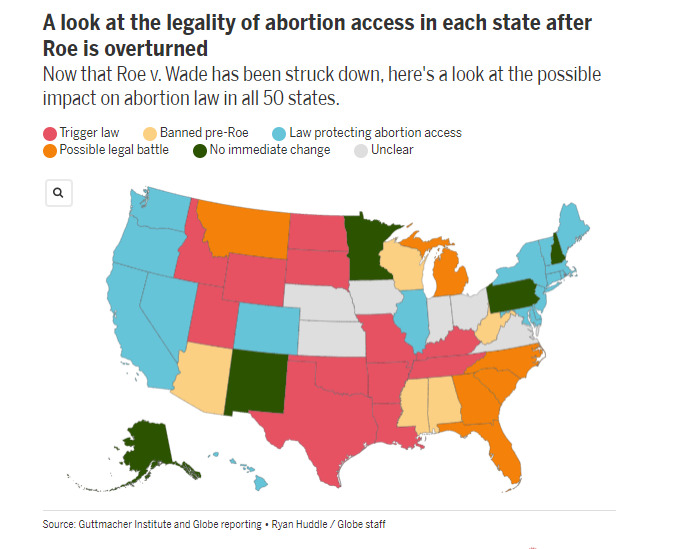
The 10th year reappointment and its immediate ability, upon passage of the law, to replace up to 3 sitting Supreme Court justices, addresses both the immediate short-term and long-term problems plaguing a U.S. Supreme Court, that now decide cases based on the rule of ideology and not the rule of law. For Justices who were honest during their confirmation hearings, who decide cases based on the rule of law, and who don’t display a pattern of ethical or political conflicts of interest, the 10-year reappointment allows an if-it-ain’t-broke-don’t-fix-it option because the law would give the President the sole authority to reappoint the Justice with just the stroke of a pen.
For the consistency of American democracy, it would be best if a woman’s right to control her body is restored immediately by the House and Senate codifying abortion into federal law, as opposed to any attempt by a U.S. Supreme Court in the immediate future to overturn, the overturn of Roe v Wade. But for the security and survival of American democracy, the same legislation that restores an American woman’s right to control her body, by codifying abortion into law, must also mandate a 10-year reappointment for Supreme Court justices.

Failure to include the 10-year reappointment, along with its ability to immediately replace up to 3 sitting justices, in any legislation codifying abortion into federal law makes all democratic rights that are currently exercised based on the rule of law, including any new one granted by codifying abortion, vulnerable to being judged unconstitutional based on the current U.S. Supreme Court’s autocratic rule of ideology and conservative politics.
